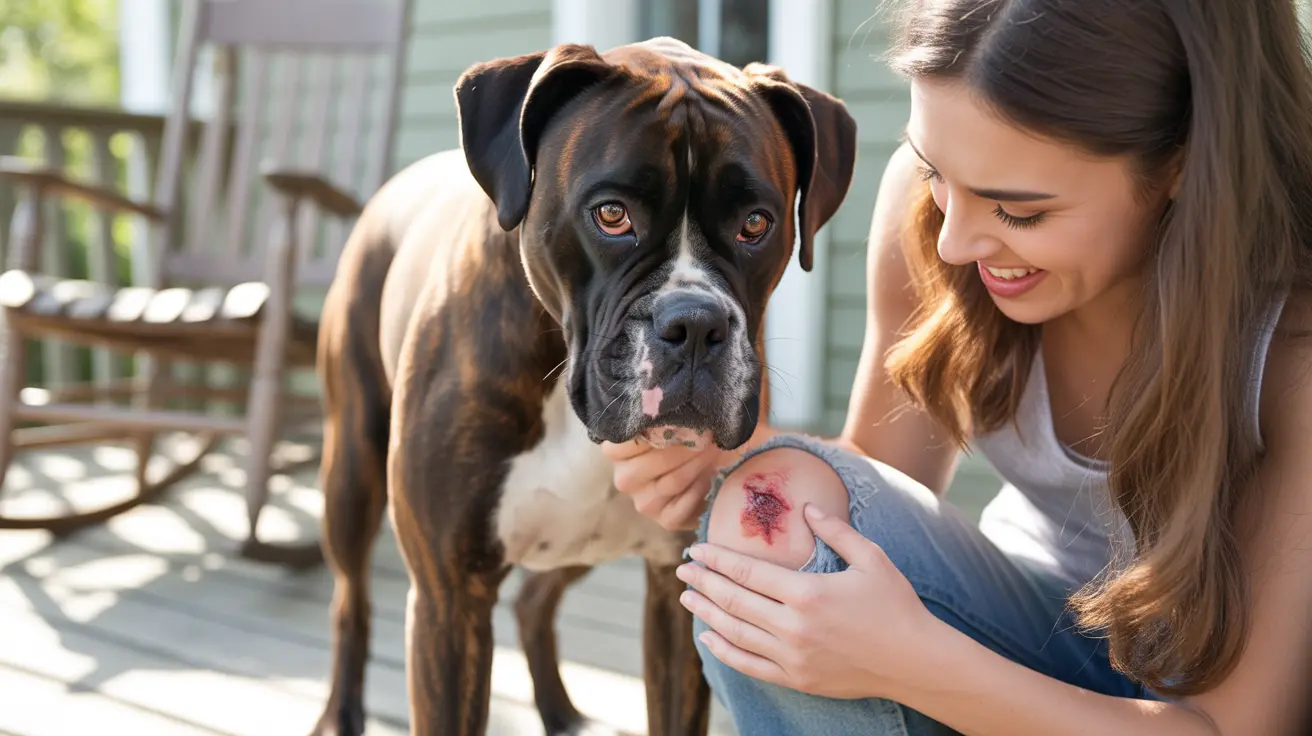The Evolutionary Background of Wound Licking
Dogs have inherited wound-licking behavior from their wolf ancestors, who used this technique as a primitive form of wound care in the wild. In pack settings, wolves would help clean and tend to each other's injuries, establishing this behavior as both a survival mechanism and a social bonding ritual.
This ancestral instinct remains strong in modern dogs, who view wound licking as a natural way to care for both themselves and their human family members. It's part of their genetic programming to address injuries through the only tools they have available – their tongues.
Understanding Your Dog's Motivation
Dogs are drawn to wounds for several compelling reasons. Their keen sense of smell detects changes in body chemistry around injured areas, and they may pick up on stress signals from their owners. The act of licking serves multiple purposes:
- Showing empathy and concern
- Attempting to clean and care for the wound
- Strengthening social bonds
- Investigating unusual scents or tastes
- Offering comfort through physical contact
The Science Behind Dog Saliva
Dog saliva does contain some compounds that can influence wound healing, including mild antibacterial properties and enzymes that help clean debris. However, these benefits are minimal compared to modern medical care, and the risks often outweigh any potential advantages.
Research has shown that dog saliva contains:
- Lysozyme (an antibacterial enzyme)
- Lactoferrin (an antimicrobial protein)
- Various bacteria that can be harmful to humans
- Growth factors that may promote healing in dogs but not necessarily in humans
Health Risks and Concerns
Despite good intentions, allowing dogs to lick wounds can lead to serious complications. Dog mouths harbor numerous bacteria that can cause infections in human wounds, particularly in people with compromised immune systems.
Some potential risks include:
- Bacterial infections requiring medical treatment
- Delayed wound healing
- Increased inflammation
- Risk of zoonotic disease transmission
- Potential scarring from continued irritation
How to Manage Wound-Licking Behavior
When your dog shows interest in licking your wounds, it's important to respond appropriately while maintaining your bond. Here are effective management strategies:
- Keep wounds properly covered and out of reach
- Redirect your dog's attention to appropriate activities
- Use positive reinforcement to encourage alternative behaviors
- Provide mental stimulation through games and toys
- Consider using bitter-tasting topical deterrents if necessary
Frequently Asked Questions
Why does my dog lick my wounds, and is it instinctive behavior?
Dogs lick wounds primarily due to instinct inherited from their wolf ancestors. This behavior serves as both a cleaning mechanism and a way to show care and concern for pack members, making it deeply ingrained in canine nature.
Does dog saliva actually help heal human wounds or prevent infection?
While dog saliva contains some antibacterial compounds, its healing properties are minimal and far outweighed by the risk of bacterial infection. Modern medical treatment is much more effective and safer for wound healing.
What are the health risks of letting my dog lick my cuts or sores?
Allowing dogs to lick wounds can lead to bacterial infections, delayed healing, and increased inflammation. Dog mouths contain numerous bacteria that can be harmful to humans, especially in open wounds.
How can I stop my dog from licking my wounds without harming our bond?
Redirect your dog's attention to positive activities, keep wounds covered, and reinforce alternative behaviors. This maintains your emotional connection while protecting your health.
Why do dogs lick human wounds beyond cleaning—are there emotional reasons?
Dogs lick wounds as a way to show empathy, strengthen social bonds, and offer comfort. It's part of their natural caregiving behavior and can be an expression of their attachment to their human family members.
Conclusion
While dogs' instinct to lick wounds comes from a place of care and concern, it's best to prevent this behavior for health and safety reasons. Instead, focus on channeling your dog's nurturing instincts into more appropriate activities while maintaining proper wound care practices.






